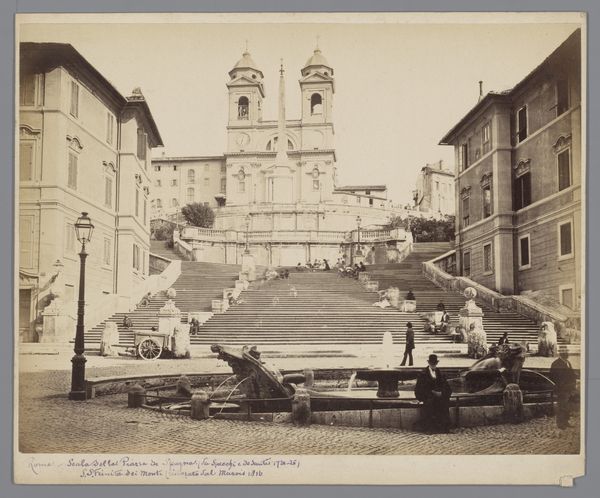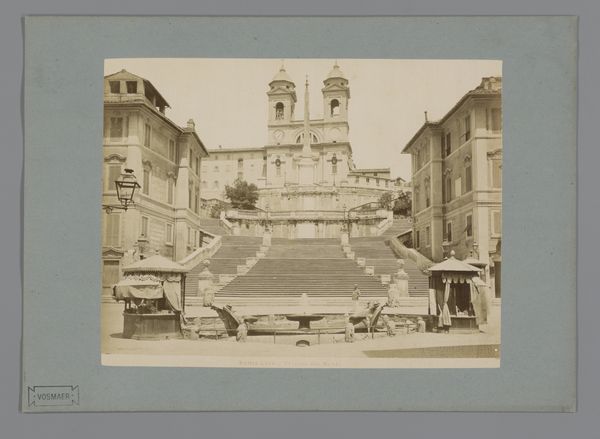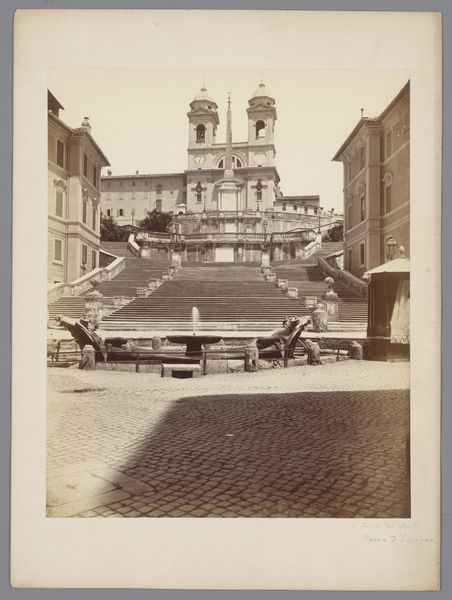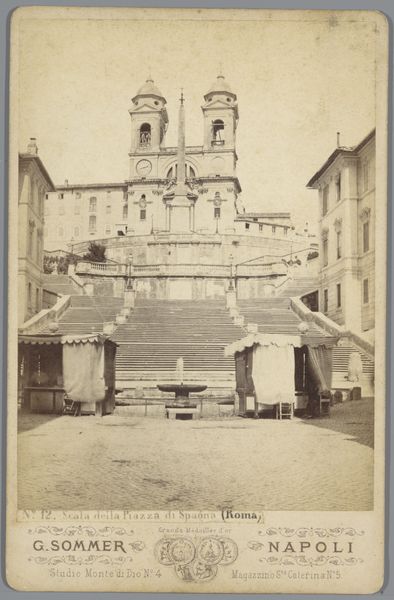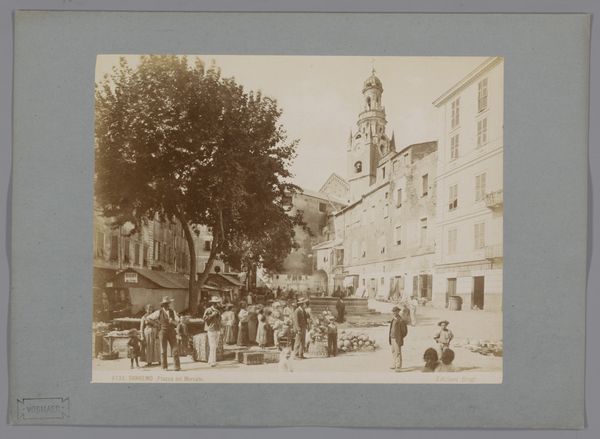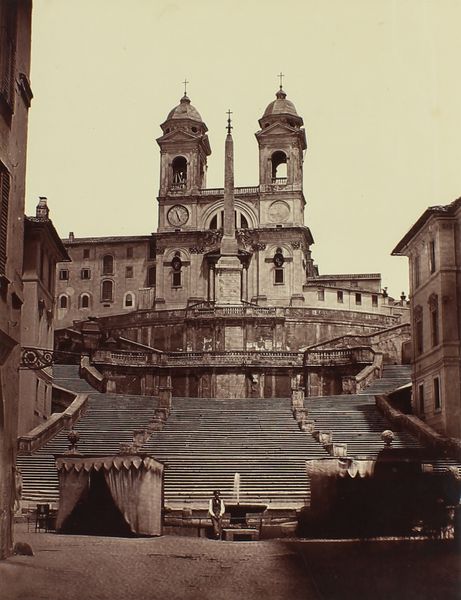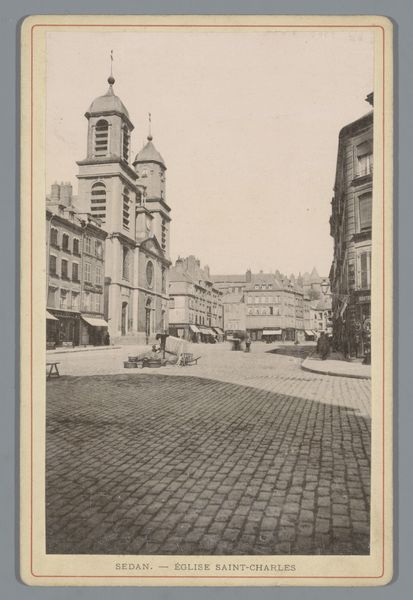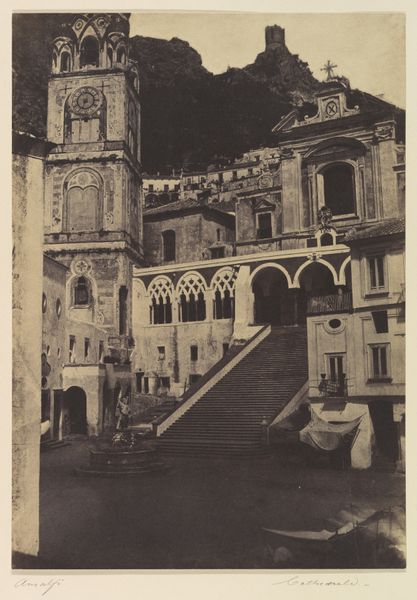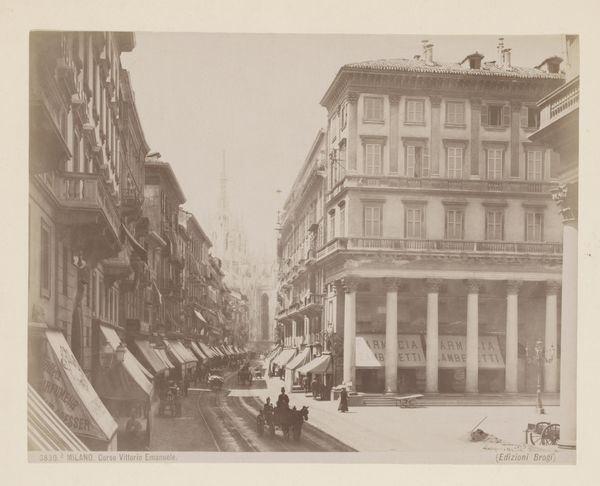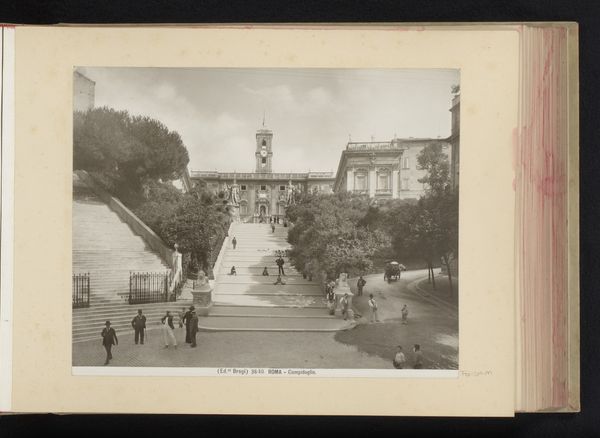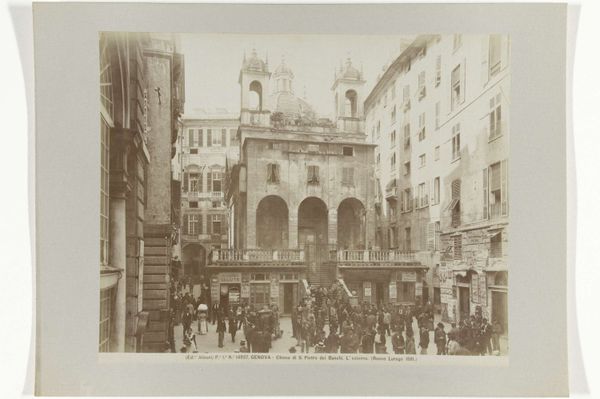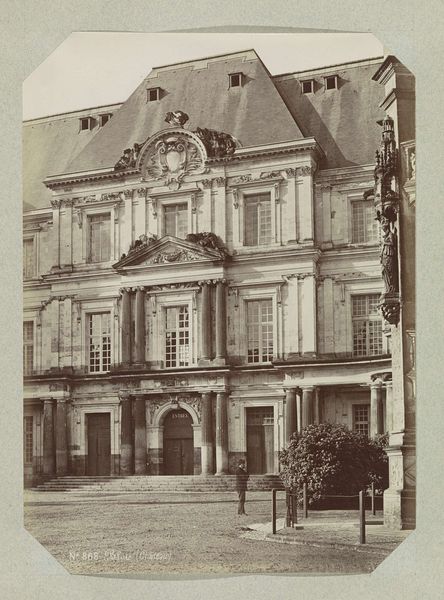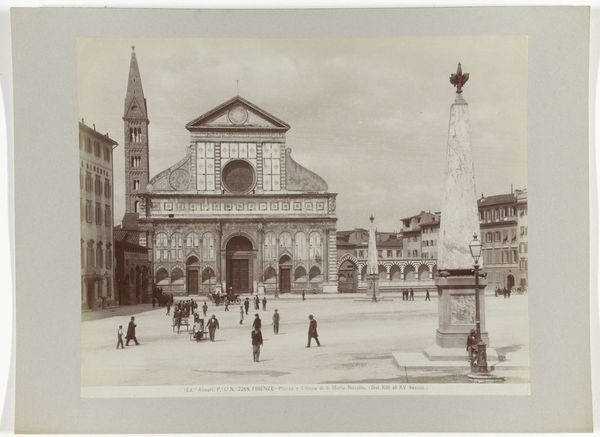
photography, gelatin-silver-print, albumen-print
#
landscape
#
photography
#
gelatin-silver-print
#
19th century
#
cityscape
#
italian-renaissance
#
albumen-print
Dimensions: height 202 mm, width 252 mm, height 221 mm, width 295 mm
Copyright: Rijks Museum: Open Domain
Editor: We’re looking at “Spaanse Trappen te Rome,” or the Spanish Steps in Rome, a gelatin silver print by Ludovico Tuminello, created sometime between 1851 and 1900. It's a rather grand, almost theatrical composition, but I wonder what you make of its visual structure? Curator: The image compels us to analyze the strategic arrangement of forms within the picture plane. Note the geometric precision of the steps themselves, their repetitive horizontal lines juxtaposed against the vertical thrust of the obelisk and the flanking structures. This interplay creates a dynamic tension. Editor: A tension? It feels quite still, almost timeless to me. Curator: But stillness can belie underlying forces. The lines converge, leading the eye upward, implying movement, aspiration. Consider the tonal variations; the contrasts of light and shadow articulate depth and volume, rendering the architectural elements as almost palpable forms. Are we to interpret them as representational, or is there an alternate conceptualization? Editor: I suppose the light does create a sense of depth and emphasizes the imposing size of the steps. But where does that lead us in terms of understanding the photograph itself? Curator: The question is what you think about what you observed! Ask yourself what you noticed. Consider how these formal qualities contribute to the overall aesthetic experience. The composition is more than just a depiction of a place; it's a carefully constructed arrangement of shapes and tones designed to evoke a particular response. Editor: So, by looking closely at the composition, the lines and the light, we can move beyond just seeing a photograph of the Spanish Steps? Curator: Precisely. By deconstructing the visual elements, we arrive at a deeper understanding of the photographer's artistic intention and the artwork’s inherent aesthetic value.
Comments
No comments
Be the first to comment and join the conversation on the ultimate creative platform.
